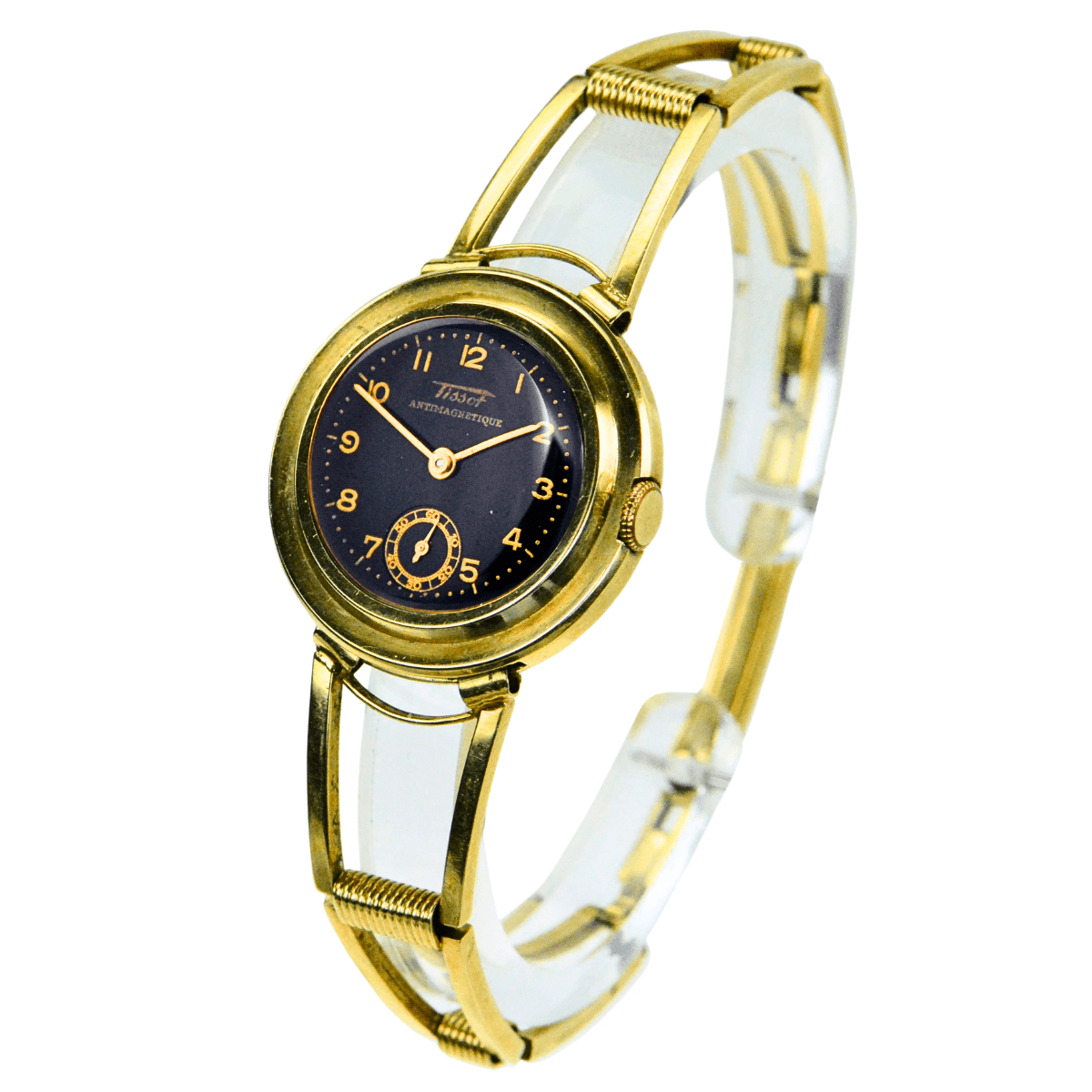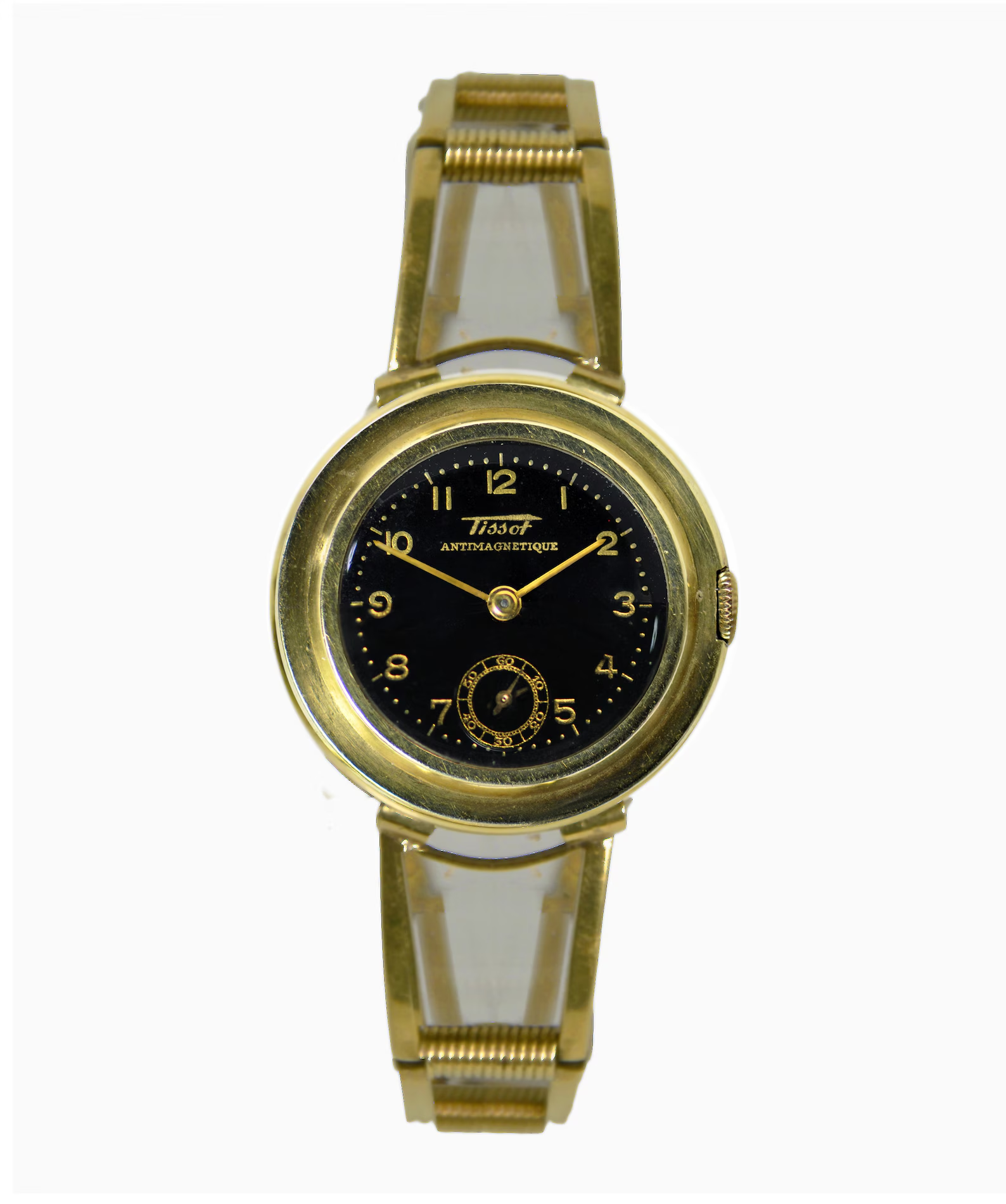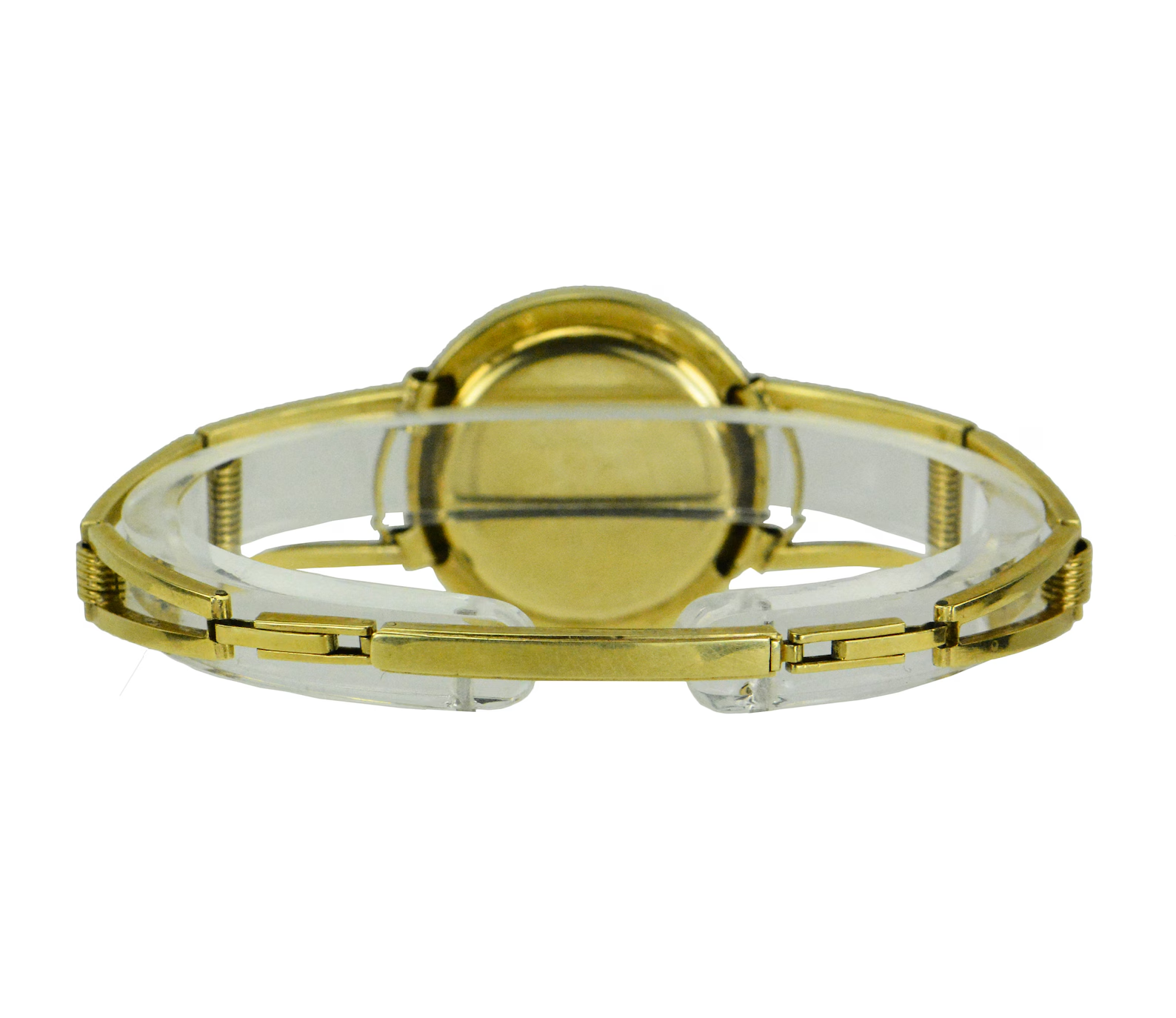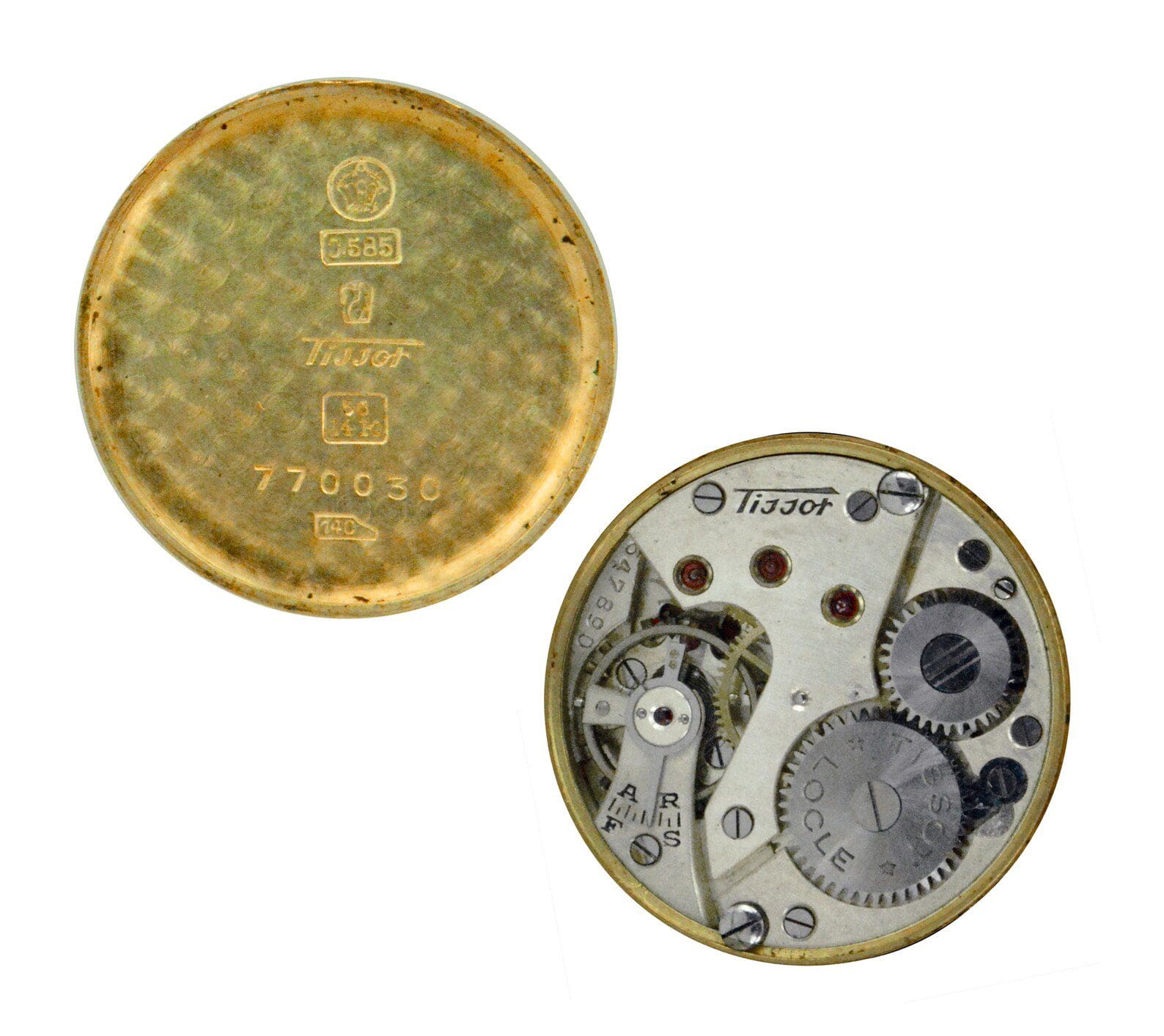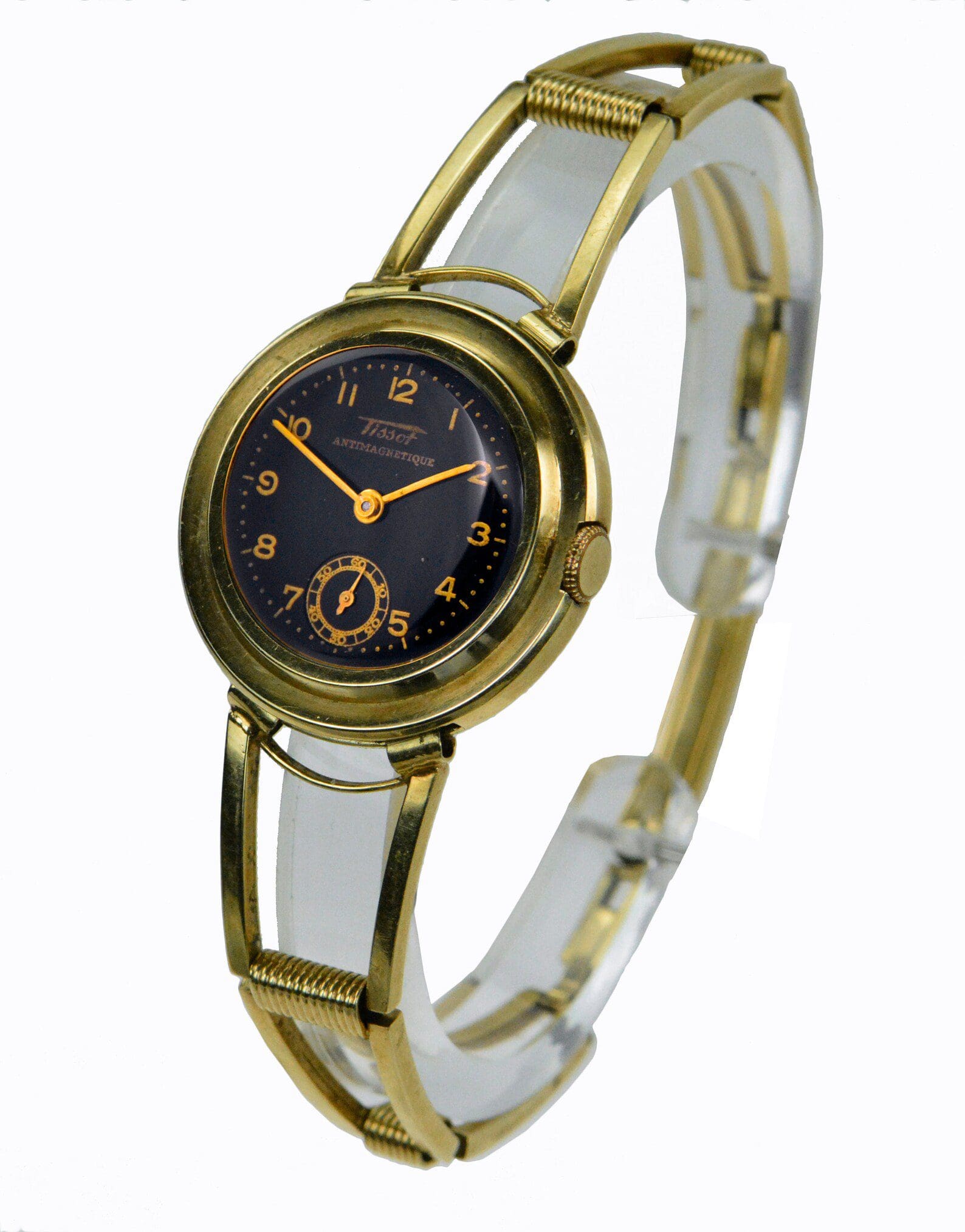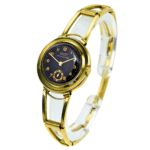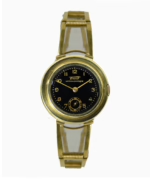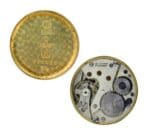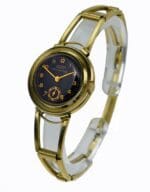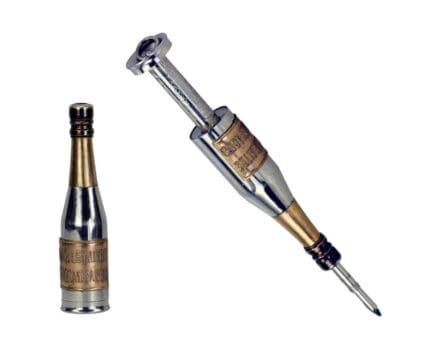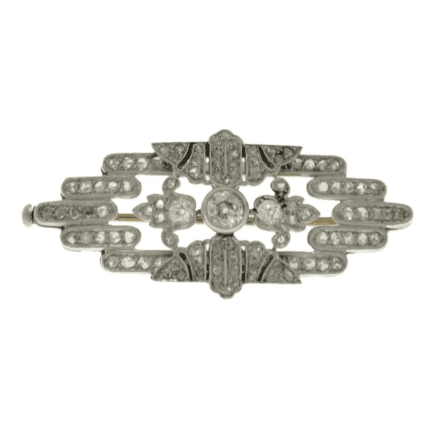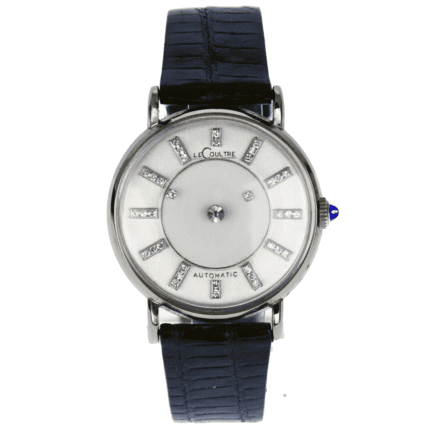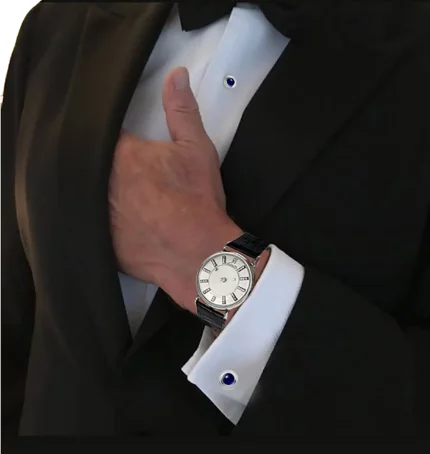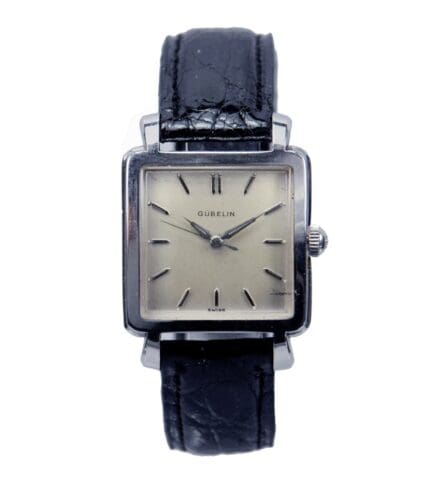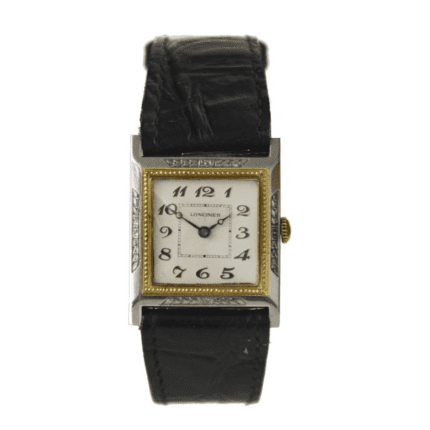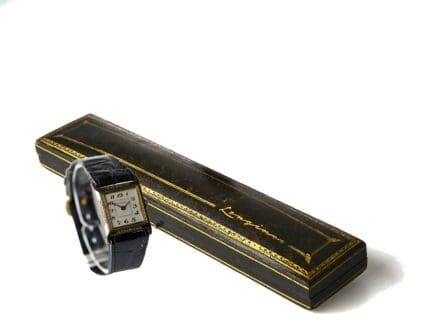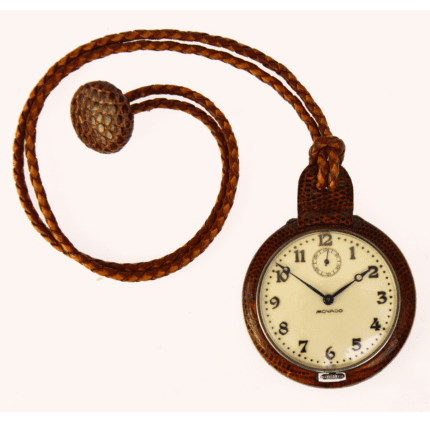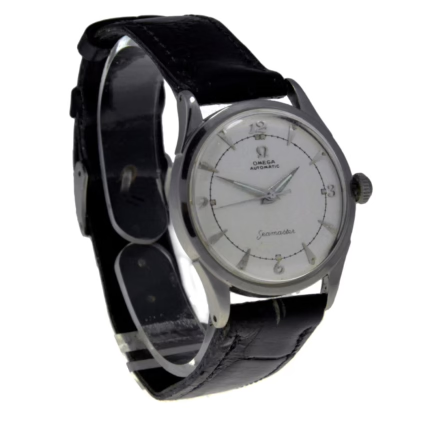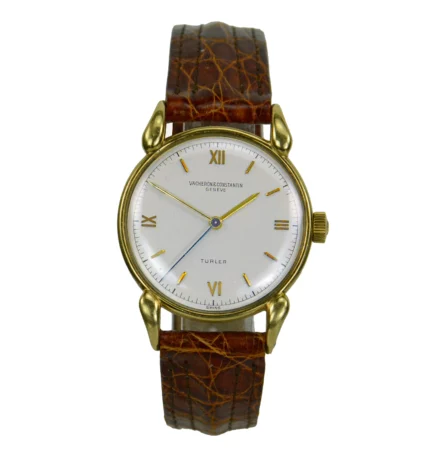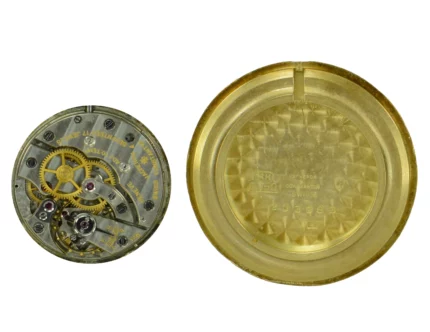Omega-Tissot Bauhaus Design Art Deco Solid 14K Gold Wristwatch with Matching Integrated 14K Designer Bracelet, Switzerland 1930s
This very fine, solid 14K gold Omega-Tissot wristwatch is the quintessence of Bauhaus inspiration and Art Deco design.
Its Bauhaus composition – from case to dial to bracelet – encompasses circles, triangles and rhomboids. Its smooth, gentle intersecting forms and curves offset in layers which, in turn, are offset to each other, creating an aesthetically pure and extremely powerful Machine Age effect. Incapable of eliciting indifference, this piece almost “demands out loud” to be loved… or else adored!
- Diameter: 30 mm including the embedded winding crown
- Dial: Original. Signed Tissot. Antimagnetic
- Case and integrated bracelet: Original Tissot. Hallmarked Swiss 14K gold
- Condition: Excellent. Serviced and tested by Master Swiss Watchmaker
Shipping Worldwide via Courrier Service. Duty-Free Shipping within Europe.
Payment: If you prefer to pay by bank transfer or lay-away, please send us a message. Likewise, if check-out proves unable to process your credit card.
Omega-Tissot history
Tissot – with its signature “Innovators by Tradition” slogan – has pioneered craftsmanship and innovation since the Company’s founding in 1853 by Charles-Félicien Tissot and his son Charles-Émile Tissot… in the Swiss mountain city of Le Locle.
Tissot introduced the first pocket watch with two time zones in 1853. Then, in 1858, Charles-Emile Tissot traveled to Russia where his savonette pocket watches were purchased by the Russian Czar and his officers, as well as by the “Who’s Who” throughout the Russian Empire.
Following the Great Depression, in 1930, Charles and Paul Tissot signed a sales and manufacturing agreement with the Brandt brothers, founders of Omega: Tissot and Omega then formed the Société Suisse pour l’Industrie Horlogère (SSIH) holding.
That same year, Tissot designed the first anti-magnetic watch… and in 1971 – another landmark – launched a revolutionary new product: the Tissot IDEA WATCH known as Astrolon. It was the first watch with a plastic mechanical movement and case. This model later evolved into what a decade later would be known as the Swatch Watch.
The Tissot company was also the first to produce watches with cases made of stone (the Alpine granite Rock watch in 1985), mother of pearl (the Pearl watch in 1987) and wood (the Wood watch in 1988).
In 1983, a new merger occurred between the SSIH and ASUAG groups; Nicolas G. Hayek subsequently took the new entity under his responsibility and created the Société de Microélectronique et d’Horlogerie (SMH). Renamed the Swatch Group in 1998, today it is the largest watch producer and distributor in the world. Still based in Le Locle, Switzerland, Tissot is marketed in 160 countries around the world.
Further, Tissot watches have been worn notably by Sarah Bernhardt, singer Carmen Miranda, Elvis Presley, Grace Kelly, Banassim Kassim and Nelson Mandela. James Stewart wore a Tissot watch in the movie “Rear Window”, as did Angelina Jolie in “ Croft Tomb Raider: The Cradle of Life” and “Mr. & Mrs. Smith”.
Additionally, Tissot’s first engagement as an “official timekeeper” reaches back to 1938, when they timed the ski championships in Villar, near the company’s home town in the Jura mountains. Since then, Tissot additionally has been an official timekeeper for the world championships in cycling, motorcycling, fencing and ice hockey, plus the 1957 Davis Cup and also a key Sponsor for the Formula one teams Lotus, Renault and Sauber.
Omega History
The Omega Watch Company was founded by Louis Brandt in La Chaux-de-Fonds, Switzerland, in 1848. Initially the firm assembled key-wound precision pocket watches using parts supplied by local craftsmen.
After Louis Brandt’s death in 1879, his two sons Louis-Paul and Cesar took over control of the business. Louis-Paul and Cesar Brandt both died in 1903, leaving one of Switzerland’s largest watch companies – with an annual production of 240’000 watches and 800 employees – in the hands of four young Brandt family members, the oldest of whom was Paul-Emile Brandt.
The difficult economic times that followed World War I caused Paul-Emil Brandt, as of 1925, to actively seek a union between OMEGA and Tissot… which subsequently led to their merger in 1930 within the group SSIH.
By the 1970s, SSIH had become Switzerland’s no 1 producer of finished watches. However, due to the severe monetary crisis and recession from 1975 to 1980, SSIH had to be bailed out by the banks. In 1985 the holding company was taken over by a group of private investors and renamed SMH (Societe suisse de microelectronique et d’horlogerie).
The new group achieved rapid growth and success to become today’s top watch producer in the world. Named Swatch Group in 1998, it now notably includes Blancpain and Breguet.
Dynamic and flourishing, OMEGA remains one of the company’s most prestigious flagship brands.


